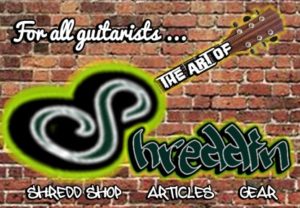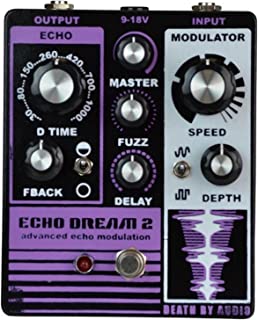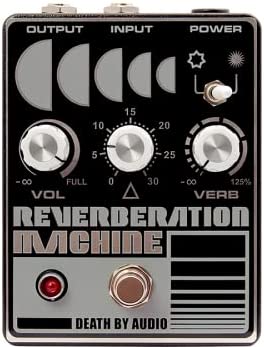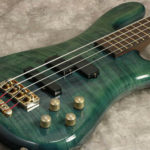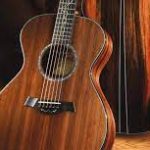Death By Audio Boutique Pedals
Death By Audio are one of the few pedalmakers doing what many try to do, but that actually succeed – make gear that is completely unique. Here’s why their pedals sound like nothing else out there.
The company was started back in 2002 by Oliver Ackerman (who later fronted NYC noise band A Place To Bury Strangers). As the story goes, Ackerman was trying to scrape together some cash to take a trip to Europe with his girlfriend. With few prospects on the horizon, he built a couple of pedals based on a prototype he’d been working on, knowing that if a dozen or so sold, he’d be in the clear. That pedal was the Total Sonic Annihilation.
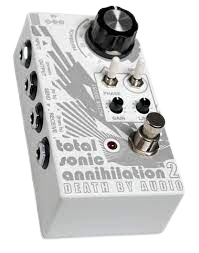
A few years after this gestation, Ackerman was urged by friend Matt Conboy to continue building and designing, and from there the company began to grow in earnest.
Next came the Sound Saw, an insanely violent fuzz capable of “feedback insanity, cutting, sub woofing, room shaking, glass breaking frequencies” (all of Death by Audio’s pedals are described like this, and it’s fucking awesome).
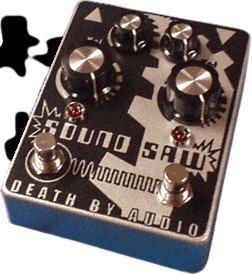
Then the Harmonic Transformer – a truly unique fuzz featuring just two switches for intensity and harmonic shape, plus a master volume.
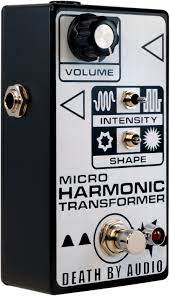
From here, the Death by Audio catalogue grew rapidly, birthing mutated beasts like Waveform Destroyer (a four-switch fuzz/filter/boost) and bizarre oddities like the Robot (a lo-fi 8-bit pitch transposer) like some kind of incestuous family of mad scientists.

Nothing is normal in the DBA line-up. Everything is unique. Whether it’s chucking a fuzz circuit in a delay pedal or replacing the knobs on a fuzz with cross-fading sliders, the team are constantly pushing boundaries and taking things to the absolute extreme.
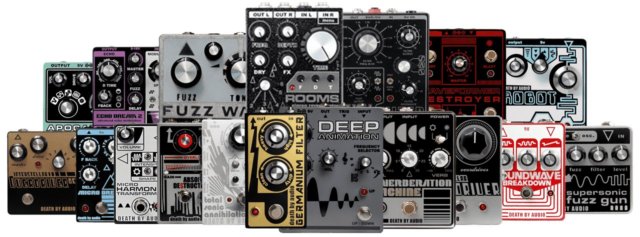
The Virtue of Simplicity
True, the same can be said for a bunch of great pedal builders working today. But Death by Audio do it differently. They don’t mess around with DSP technology – most of their pedals are two or three knob affairs, maybe a switch or two, and rugged as you’d ever want. There’s no screens, no complicated interfaces, no expression pedal options or MIDI compatibility. All the hard work is done for you and hidden under the hood.
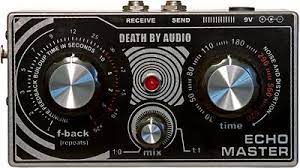
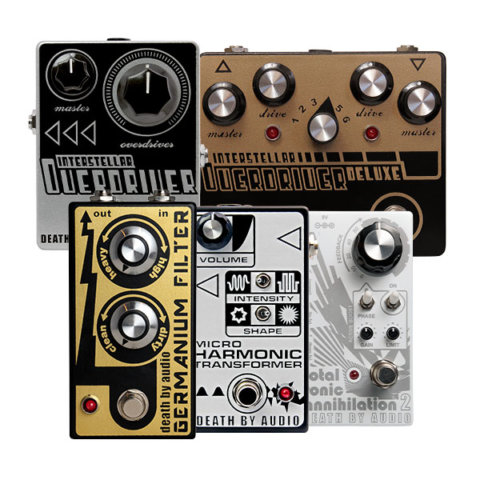
While having heaps of features to play around with is great, they can be hugely detrimental to the player, who gets sucked into fiddling with knobs rather than fiddling with their guitar. The virtue of DBA’s pedals is their simplicity. They force you to be more creative with your playing and explore ways your guitar and amp and other stompboxes interact with the pedal, rather than simply allowing it to overwhelm your playing.
Don’t get me wrong through, their simplicity by no means equates to mundanity; some of the parameters on their pedals are the strangest on the market – from an ‘Altitude’ knob on a reverb to introduce gain, to a plethora of filter controls on a fuzz. The point is that nothing is superfluous – everything has its place, everything is entirely useable, and everything begs to be used.
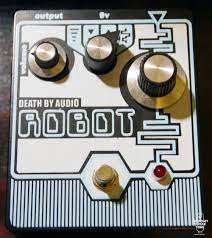
Sonic Extremists
The guiding principal of the Death by Audio philosophy is extremity – they are sonic extremists. While their pedals are most definitely capable of more traditional tones, this probably isn’t why you would buy one.
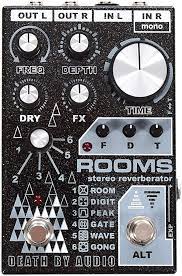
They’re meant to challenge you. To force you to explore tones you didn’t know existed, or that you never thought would fit into your ‘sound’. And this is no doubt the reason that they’ve become central to the sound of some of the most interesting artists out there today.
Take the Fuzz War for example. Perhaps Death by Audio’s most distinguished offering (favoured by fuzz lords Ty Segall and John Dywer), the pedal is a beast. Chunky as hell, with giants knob and a sloppy silkscreened design, players may be duped into thinking it’s some kind of Big Muff appropriation (like so many others out there), and while it most certainly it can get you into Muff territory, it’s so much more than that.

The tone knob is the heart and soul of the pedal. For much of the tone spectrum, you’ll find creamy, wall-of-noise distortion (a little bit Big Muff-ish, albeit way more aggressive and unstable). But fully counter-clockwise it’ll make your amp sound like it’s been locked in a safe and dropped to the bottom of the ocean. Fully clockwise, it will make it sound like you’re playing your guitar through a 5-watt practice amp that’s been thrown off a bridge. But somehow, all these sounds are really useable, and probably some of the best you can coax from the pedal.
The Micro Dream delay is another prime example. With just three knobs to work with (feedback, delay level and delay time), you might assume the sounds it’s capable of are fairly limited. But it’s when you take each of these parameters to their extremes that the pedal really shines.
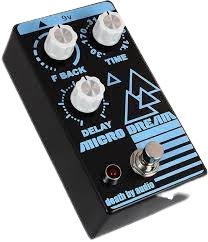
Setting the feedback to the brink of oscillation and rolling back the delay level so that it sits nicely under your guitar in the mix will give you a wonderful, cavernous bed of lo-fi repeats to float upon. There’s something about the echoes (particularly at shorter settings) that is reminiscent of a magnetic drum echo like an Echorec – fluttery and metallic. And when self-oscillation takes off, it quickly becomes destructive
You could get lost for hours exploring the DBA catalogue and attempting to decide what you want to try. They’re all completely unique and alluring in their own way. But I’d definitely recommend getting at least one before you die (I can pretty much assure you it won’t be the last).

Death By Audio Pedals
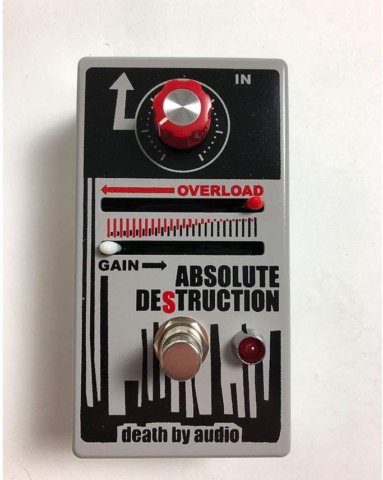
Absolute Destruction
Controls include: MASTER VOLUME (the red knob), OVERLOAD, GAIN.
OVERLOAD (red) and GAIN (white) are horizontal sliders and recessed close to the enclosure to protect them from being bent or accidentally moved while playing.
Echo Dream II
The most beautiful blissed out delay ever heard. You have entered the candy coated dream world of the Echo Dream 2. The Echo Dream 2 is a lofi modulating delay pedal that can drive into fuzzed out insanity. The modulation can be set to give spacey chorus sounds or warbling bounces to robo- groove arpegiations in squarewave mode. The fuzz can range from subtle overdrive to ballsy fuzzstain and bring upon satans spawns to do the mopping up.
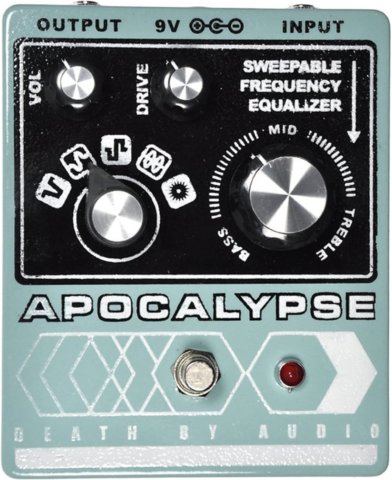
Apocalypse
It has 5 different distortion circuits, ranging from a thin metal distortion, to octave fuzz to blown out end of the world distortion. It’s one of the most intense, varied fuzz pedals we’ve ever heard. Perfect for anyone in need of the ultimate distortion pedal.
Reverberation Machine
Spring/plate-style reverb w/ fuzz that becomes huge synthetic atmosphere creator at high settings; adds depth to instruments; unique Altitude control adjusts reverb gain for wide open, distorted ambience; multi-function Verb control adjusts reverb size and wet/dry mix, and at max reverb is much louder than clean signal for powerful walls of sound
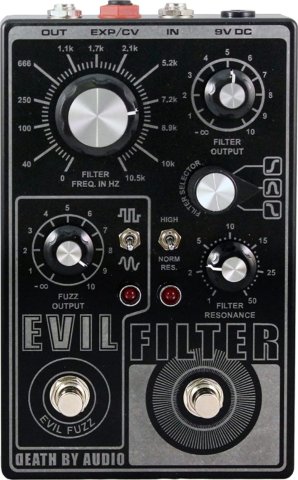
Evil Filter
Psycho HP/BP/LP filter with a laser etched enclosure. Can be pushed past the limit to glitch out into octaves up, down, and envelope folds. The specific medical grade IC chip used allows for a hyper precise filter that sounds like no other. The Evil Fuzz is just that totally psychotic destruction or totally psychotic destruction times two with blooming inverted compression.
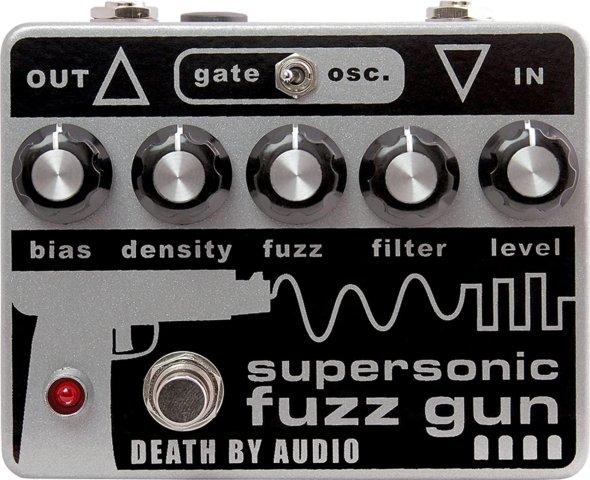
Supersonic Fuzz Gun
Synth-like velcro fuzz with Gate and Oscillator modes; extremely interactive controls; Gate – ripping velcro fuzz sounds w/ built-in gate, Oscillator – switches in tunable oscillator for drones, feedback, octaves, harmonies, etc.;
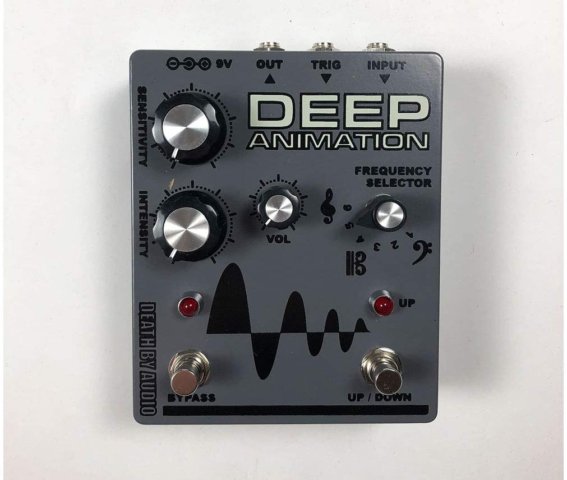
Deep Animation
Death By Audio Deep Animation True bypass Guitar Effect Pedal with Frequency Selector This is the Deep Animation and it’s so good it hurts. This crazy goofball responds to how you play, enveloping and filter sweeping and overdriving.
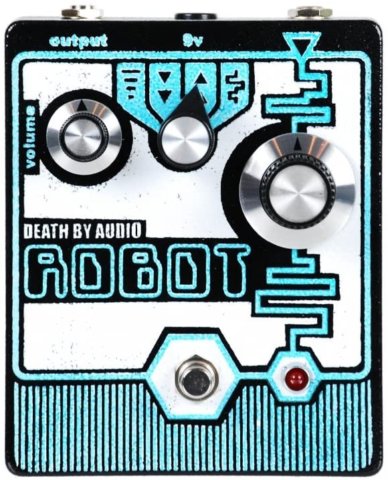
Robot
The Robot is a low fidelity 8 bit pitch transposer with absolutely no feelings what-so-ever. It is completely synthetic and transforms any input into a spuree of resynthesized robot jargon. Features bendable super lo-fi octave up, octave down, arp, and unity pitches
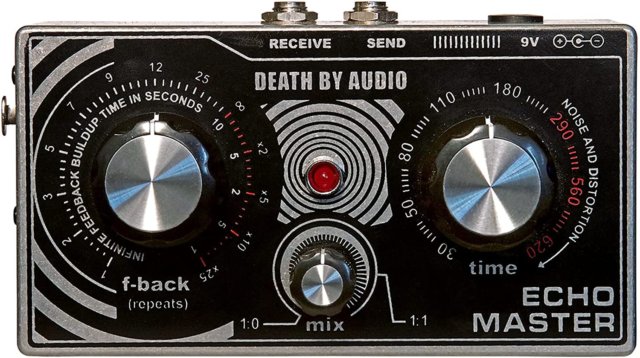
Echo Master
Designed specifically for vocals; Lofi tape-style vocal delay; Vocal preamp for live & studio w/ matched set of Bourns transformers; Ability to push delay chip to and past the limit, “red zone” on pedal graphic indicates delay chip overload;
Guitar & Gear Articles

